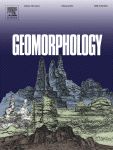Brantley et al., 2017
Toward a conceptual model relating chemical reaction fronts to water flow paths in hills
Brantley Susan L., Marina Lebedeva, Victor Balashov, Kamini Singha, Pamela L. Sullivan, Gary Stinchcomb (2017)
Geomorphology, vol 277, p 100-117
-
National, Eel, Luquillo, Shale Hills, INVESTIGATOR, COLLABORATOR
-
Boulder, Shale Hills, INVESTIGATOR
-
Calhoun, Shale Hills, INVESTIGATOR, COLLABORATOR
Abstract
Both vertical and lateral flows of rock and water occur within eroding hills.Specifically, when considered over geological timeframes, rock advects vertically upward under hilltops in landscapes experiencing uplift and erosion.Once rock particles reach the land surface, they move laterally and down the hillslope because of erosion.At much shorter timescales, meteoric water moves vertically downward until it reaches the regional water table and then moves laterally as groundwater flow. Water can also flow laterally in the shallow subsurface as interflow in zones of permeability contrast. Interflow can be perched or can occur during periods of a high regional water table.The depths of these deep and shallow water tables in hills fluctuate over time. The fluctuations drive biogeochemical reactions between water, CO2, O2, and minerals and these in turn drive fracturing. The depth intervals of water table fluctuation for interflow and groundwater flow are thus reaction fronts characterized by changes in composition, fracture density, porosity, and permeability.The shallow and deep reaction zones can separate over meters in felsic rocks.The zones act like valves that reorient downward unsaturated water flow into lateral saturated flow. The valves also reorient the upward advection of rock into lateral flow through solubilization. In particular, groundwater removes highlysoluble, and interflow removes moderately soluble minerals.As rock and water moves through the system, hills may evolve toward a condition where the weathering advance rate, W, approaches the erosion rate, E.If W = E, the slopes of the deep and shallow reaction zones and the hillsides must allow removal of the most soluble, moderately soluble, and least soluble minerals respectively. A permeability architecture thus emerges to partition each evolving hill into dissolved and particulate material fluxes as it approaches steady state.
Citation
Brantley Susan L., Marina Lebedeva, Victor Balashov, Kamini Singha, Pamela L. Sullivan, Gary Stinchcomb (2017): Toward a conceptual model relating chemical reaction fronts to water flow paths in hills. Geomorphology, vol 277, p 100-117. DOI: 10.1016/j.geomorph.2016.09.027
 This Paper/Book acknowledges NSF CZO grant support.
This Paper/Book acknowledges NSF CZO grant support.
Explore Further




